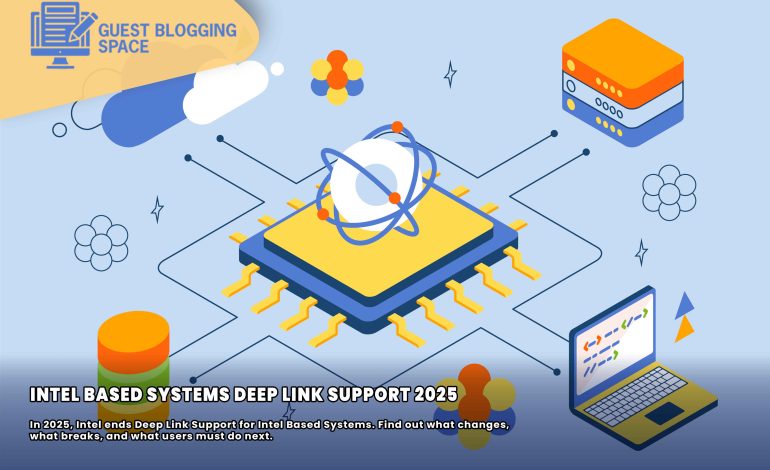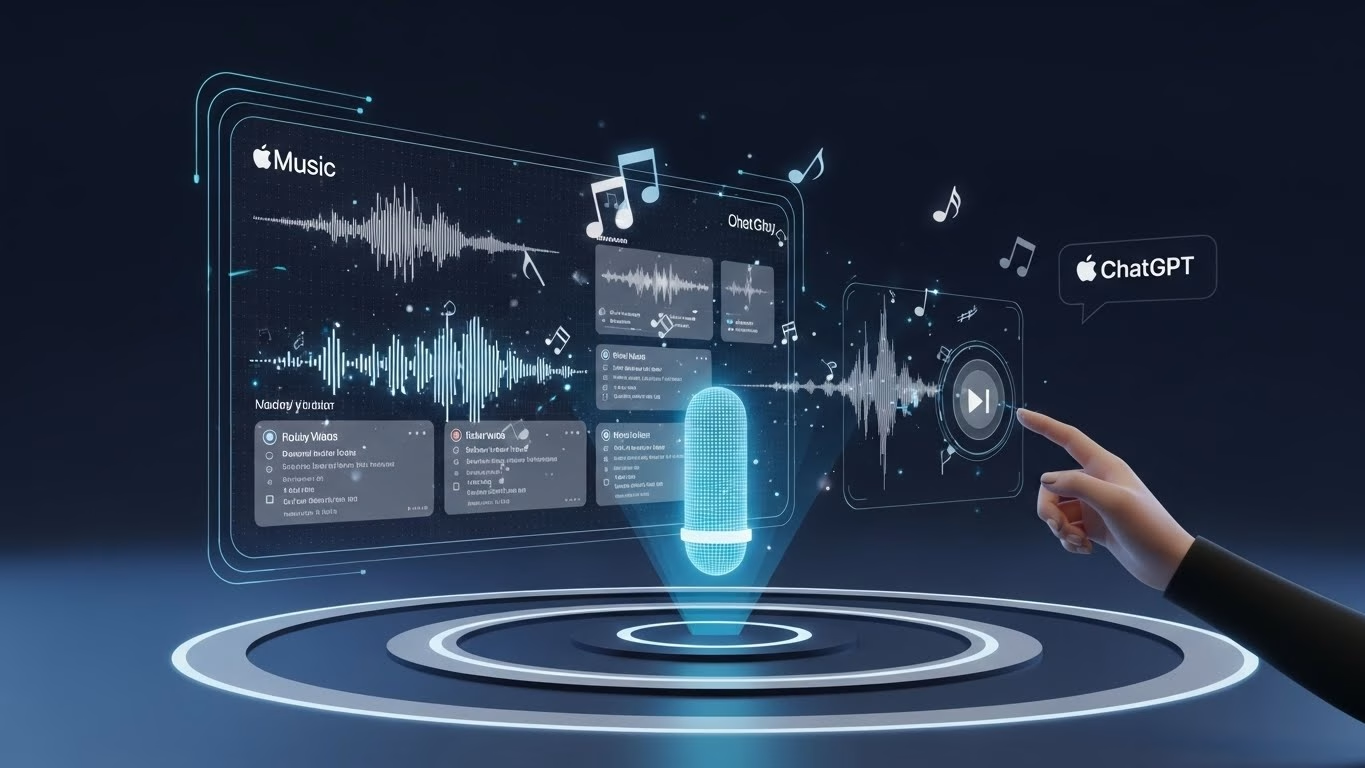Intel Based Systems Deep Link Support 2025 Officially Ends – What Users Must Know

In a surprising move, Intel has ended Deep Link support across all systems moving forward. This shift impacts both users and developers relying on integrated performance features. Once considered a major step forward, Deep Link aimed to enhance speed and efficiency. Its retirement signals a broader change in Intel’s software priorities. Many now question what this means for performance tools and future system compatibility. The announcement surrounding Intel Based Systems Deep Link Support 2025 has sparked industry-wide discussion. With innovation moving toward AI and automation, Intel’s decision reflects evolving trends. As the tech landscape shifts, so do the tools we once relied on.
What Was Intel Deep Link?
Deep Link was a software solution by Intel designed to optimize performance across different Intel hardware components. It enabled better cooperation between CPU, GPU, and other hardware in Intel Based Systems. This technology was designed to enhance the performance and speed of supported devices. Deep Link enabled intelligent workload distribution, efficient power sharing, and performance optimization by coordinating tasks between the CPU and GPU.Intel introduced it to offer a better user experience in content creation, gaming, and general computing.
Why Intel Introduced Deep Link
The purpose behind Deep Link was to make Intel Based Systems smarter and more efficient. With this solution, Intel aimed to compete more effectively against AMD and NVIDIA. Deep Link allowed Intel to showcase the full potential of its hardware working together. The goal was to offer better battery life, faster computing, and smarter task management. Users of Intel Based Systems noticed performance gains in real-world tasks such as rendering, editing, and gaming.
Impact on Intel Based Systems After Support Ends
The end of Deep Link support will have a noticeable impact on Intel Based Systems. Users will no longer receive performance enhancements via software updates. Developers can’t rely on future patches or improvements, which limits optimization. This decision may cause a decline in the performance consistency across various Intel Based Systems. Some users might notice battery drain or slower multitasking without software-driven optimization. Intel confirmed that no security updates will be provided either, raising concerns for long-term reliability.
Alternative Solutions After Deep Link
Intel has yet to announce a direct replacement for Deep Link. However, the company is focusing more on hardware-level innovations. Future Intel Based Systems may come with improved AI-driven chipsets that offer similar or better features natively. Some industry experts expect Intel to integrate Deep Link-like features directly into the next-gen processors. Third-party developers may also step in to provide optimization tools, though they won’t match Intel’s official support. Users should consider these alternatives to maintain system performance.
Reactions From The Tech Community
The decision to drop Deep Link has sparked mixed reactions in the tech world. Many professionals who rely on Intel Based Systems for creative tasks are disappointed. Some believe Intel is shifting away from consumer-focused enhancements. Others argue that the decision may improve long-term hardware stability. Critics claim that dropping Deep Link makes older systems feel outdated. Tech reviewers are now urging users to explore performance settings manually or rely on BIOS-level tweaks.
Intel’s Official Statement On Deep Link Discontinuation
Intel issued a brief statement explaining that Deep Link no longer aligns with the company’s long-term vision. They confirmed that all maintenance and updates for Deep Link have been stopped. Intel stated the focus is now on AI integration, energy efficiency, and native hardware enhancements. While vague, this message suggests a shift toward future Intel Based Systems with built-in optimization. Intel also clarified that existing users can continue using Deep Link but should not expect support.
Impact On Software Developers And OEMs
Software developers and OEMs using Intel Based Systems now face a gap in system optimization. They will need to revise existing code that once relied on Deep Link APIs. This could lead to delays in software development and increased costs. OEMs may need to invest in alternative performance solutions. Some might even consider collaborations with third-party software vendors. Intel’s sudden move has left some partners searching for answers about long-term product support and roadmaps.
Comparison With AMD And NVIDIA’s Approach
Both AMD and NVIDIA are consistently making significant investments in optimizing their software and hardware. AMD’s Smart Access Memory and NVIDIA’s DLSS are strong examples of this. Intel Based Systems now risk falling behind in performance tuning and software-driven improvements. With Deep Link gone, Intel’s competitors gain an edge in cross-component performance. This shift could affect consumer decisions, especially in gaming and high-performance computing markets.
Intel’s Focus On AI And Next-Gen Chips
Intel has made it clear that artificial intelligence is its future priority. The company is investing in AI chipsets for future Intel Based Systems. These chips are expected to provide native performance management and resource allocation. Instead of relying on software like Deep Link, new systems will use AI for real-time optimization. This could simplify system architecture while improving energy efficiency and user experience. However, it may take time for these chips to enter the mainstream.
Future Of Performance Optimization In Intel-Based Systems
The end of Deep Link doesn’t mean the end of performance enhancements in Intel Based Systems. Future devices may rely on built-in logic and firmware-level management. Intel hinted at a new approach to system tuning that could offer better results than Deep Link. In the meantime, power users may need to rely on third-party software or adjust settings manually. Laptop users may also see OEM-specific tools to fill the optimization gap temporarily. Patience will be key until Intel rolls out the next generation of solutions.
FAQs About Intel Deep Link
What was Intel Deep Link, and why did people care about it?
Deep Link was a cool little feature that helped Intel systems run more smoothly. Basically, it let the CPU and GPU work together smarter, not harder — so things felt faster, especially when you were multitasking or running heavy apps. It wasn’t flashy, but it made a difference.
Is Deep Link still working on older Intel systems?
Yep, if it’s already on your device, it’ll still do its thing. Just don’t expect any new updates or improvements — Intel’s moved on.
Should I be worried now that Intel stopped supporting it?
Not really, at least not immediately. Your system won’t suddenly break. But yeah, over time, performance could dip a bit, and without security updates, things might get a little riskier, especially if you’re pushing your system hard.
So what now? What should users do?
You’ve got options. Some third-party tools or software from your laptop’s brand can help keep things running smooth. And hey — Intel’s working on new AI features, so something better might be coming soon anyway.









